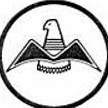Breather tube
-
Members Online
- SKI
- 00-Negative
- Nippernaper
- hammdo
- IvanP
- Yetti
- Steve Hughes
- neilpilot
- Jason Hardy
- 201Mooniac
- Aaviationist
- Ragsf15e
- 1980Mooney
- N201MKTurbo
- Ed de C.
- Fix
- TangoTango
- Ventus4
- Michael Brown
- flyingscot
- Bryan G
- rklems
- PeytonM
- tcal780
- 231MJ
- LANCECASPER
- bluehighwayflyer
- hazek
- Flyler
- DXB
- eman1200
- Jim Peace
- FoxMike
- redbaron1982
- Frank Ward
- KER
- Parker_Woodruff


Recommended Posts